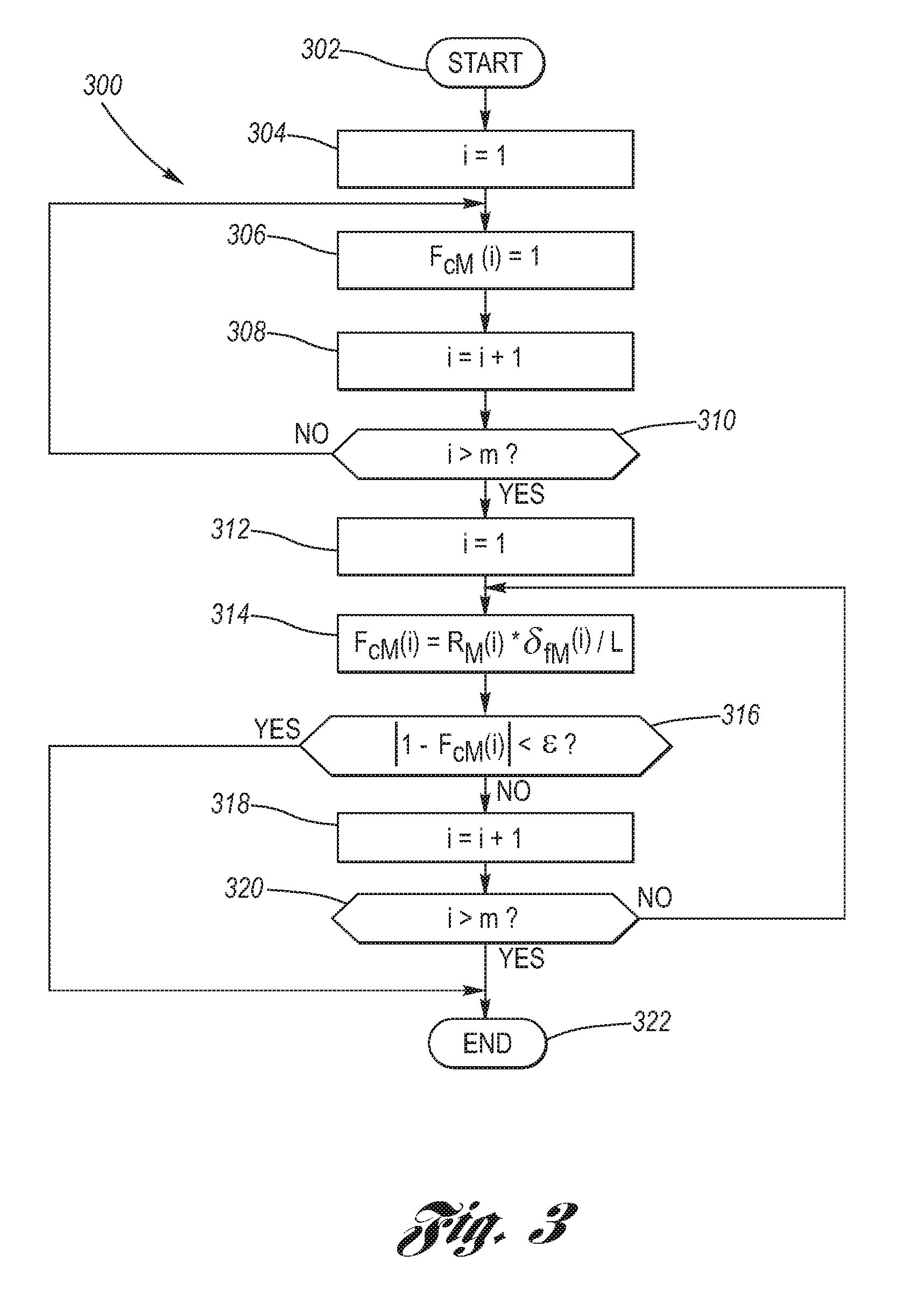Method for Populating Motor Vehicle Yaw Gain Tables for Use in an Electronic Stability Control System
a technology of electronic stability control system and yaw gain table, which is applied in the direction of process and machine control, braking components, underwater equipment, etc., can solve the problems of significant error, process is manual in nature, and cannot prevent a crash, so as to minimize calibration errors and minimize errors
- Summary
- Abstract
- Description
- Claims
- Application Information
AI Technical Summary
Benefits of technology
Problems solved by technology
Method used
Image
Examples
Embodiment Construction
[0032]Referring now to the Drawings, FIG. 1 is a schematic representation 100 of vehicle steering geometry in accordance with International Standards Organization (ISO) document 8855, wherein CG denotes the center of gravity of the vehicle 102 and C denotes the center of a turn of radius R measured between the CG and C. The front and rear of the vehicle are designated 104 and 106, respectively.
[0033]A steer angle δ1 is often described in the literature, well known in the art, as:
δ1=L / R+Ku*ay (1)
where, as depicted in FIG. 1, L is the vehicle wheelbase and R is the vehicle turn radius between the center of the turn, C, and the CG. In equation (1), Ku is the vehicle understeer gradient and ay is the vehicle lateral acceleration. Equation (1) is based on the assumption that R is much larger than L and that small angle assumptions, well known in the art, can be made such that the arctangent of an angle is approximately equal to the angle in radians. If the vehicle is not moving (i.e., v...
PUM
 Login to View More
Login to View More Abstract
Description
Claims
Application Information
 Login to View More
Login to View More - R&D
- Intellectual Property
- Life Sciences
- Materials
- Tech Scout
- Unparalleled Data Quality
- Higher Quality Content
- 60% Fewer Hallucinations
Browse by: Latest US Patents, China's latest patents, Technical Efficacy Thesaurus, Application Domain, Technology Topic, Popular Technical Reports.
© 2025 PatSnap. All rights reserved.Legal|Privacy policy|Modern Slavery Act Transparency Statement|Sitemap|About US| Contact US: help@patsnap.com



